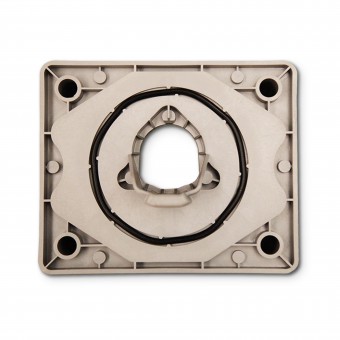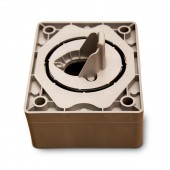charity water Well Sensor water Well Sensor by Intelligent Product Solutions |
Home > Winners > #65655 |
 |
|
||||
| DESIGN DETAILS | |||||
| DESIGN NAME: charity water Well Sensor PRIMARY FUNCTION: water Well Sensor INSPIRATION: 663 million people in the world live without clean water. That's nearly 1 in 10 people worldwide. charity: water's network of local leaders, its innovative technology and trained mechanics work together across continents to keep water flowing at well projects around the world. Ongoing online visibility into water project status informs charity: water donors how their generosity is improving lives and working to solve the global water crisis. UNIQUE PROPERTIES / PROJECT DESCRIPTION: Sensors embedded in remote wells measure the flow of clean water and record and report how efficiently the charity: water wells are working (volume of water being pumped) at any given time, anywhere in the world. The sensors are cost-effective devices that function in extreme environments where there are often significant swings in ambient temperature and a good amount of sedimentation in the water. OPERATION / FLOW / INTERACTION: charity:water works with local experts and community members to find the best sustainable solution in each place where they are installing a well or any of their other systems. Water Committees are founded in each area, drawing from the local population. PROJECT DURATION AND LOCATION: The sensor design project started in 2016 in New York and finished in May, 2018 in New York. FITS BEST INTO CATEGORY: Product Engineering and Technical Design |
PRODUCTION / REALIZATION TECHNOLOGY: The processor used on the first version of the board did not have enough RAM or Flash memory to complete the assignment. IPS selected a new processor in the same family with more resources. With the more powerful processor enabled the rewriting of the water detection algorithm. The ultimate goal of the design was for each of the six pads on the detector to very accurately determine if they were covered with air or water or some proportion of both. the "perfect" implementation would watch this data and look for these jumps. SPECIFICATIONS / TECHNICAL PROPERTIES: 223.52 mm x 193.04 mm x 83.82 mm TAGS: Remote sensor, IoT, big data, integration, lean engineering RESEARCH ABSTRACT: An array of sensors were tested for efficiency in extreme environments. Six pads on the detector determined if they were covered with air or water or some of both. The capacitive sensor value jumped 400-600 counts in water to air transitions and down the same from air to water. The "perfect" implementation watched the jumps. The number of pads covered with water would dictate how many ml of water was pouring from the well at any time. A new algorithm targeted values for air and water for each pad, when measured capacitance value was above the air target it was air, and when below water it was water. CHALLENGE: Wells aren’t always installed on a level plane or in the intended location. Hence, a GPS sensor was added so the well could be located whenever necessary. Costs limited technology selections to for water detection. Sediments/Rust in the water limited the choice of technology to deter vandalism. Parts of the undeveloped world lack robust cellular technology and are limited to 2G data service. This limits the amount and type of data that can be downloaded on a regular basis. The new algorithm had to use the same or less power than the original design. seconds to see if water is detected. ADDED DATE: 2018-02-26 15:44:31 TEAM MEMBERS (15) : Craig Brekne, Michael Calamita, Anthony Camarda, Rob Cannetti, Mark Drzymala, Hilary Farnsworth , Christoph Gorder , Karl Keppeler, Guna Kuppan, Rob Lieb, Julian Ong, Matthew Schreider, Brigitta Suwandan, Doreen Swift and James Wightman IMAGE CREDITS: Intelligent Product Solutions |
||||
| Visit the following page to learn more: https://www.charitywater.org/ | |||||
| AWARD DETAILS | |
 |
Charity Water Well Sensor Water Well Sensor by Intelligent Product Solutions is Winner in Product Engineering and Technical Design Category, 2017 - 2018.· Read the interview with designer Intelligent Product Solutions for design charity water Well Sensor here.· Press Members: Login or Register to request an exclusive interview with Intelligent Product Solutions. · Click here to register inorder to view the profile and other works by Intelligent Product Solutions. |
| SOCIAL |
| + Add to Likes / Favorites | Send to My Email | Comment | Testimonials | View Press-Release | Press Kit |
Did you like Intelligent Product Solutions' Engineering Design?
You will most likely enjoy other award winning engineering design as well.
Click here to view more Award Winning Engineering Design.








